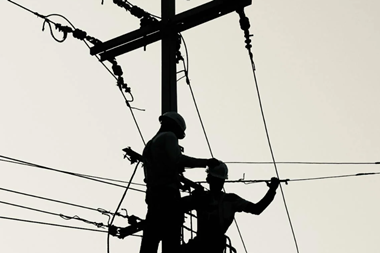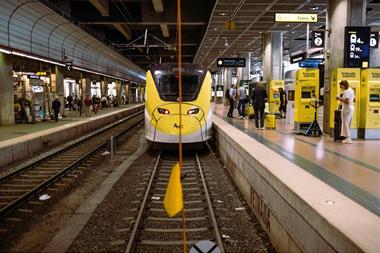Global infrastructure funds, private equity groups and opportunistic investors are queuing to pick over the assets of India’s debt-laden Infrastructure Leasing and Financial Services (IL&FS).
Their interest may bring a silver lining to the unfolding crisis involving the country’s leading infrastructure lender, which has defaulted on payments. The event has brought unwanted attention just as the 10th anniversary of the Lehman Brothers collapse passes.
The unfolding drama is causing a firestorm in India’s financial sector, but most global investors are sanguine about what they see as a “containable” domestic crisis.
The reality is that it is too early to make a call.
Some say the crisis is specific to IL&FS, a huge conglomerate with almost 170 subsidiaries and special purpose vehicles (SPVs) which own more than 13,000km of roads valued at Rs1.8trn (€22bn).
So far, the crisis has affected only India’s financial sector, and observers believe there will be limited impact on consumption and government-led investment – the two sectors currently driving the economy.
The defaults have had cascading fallout on the India stock market, wiping out billions of dollars in market value.
Geeta Chugh, a Mumbai-based analyst at S&P Global Ratings, says such a strong reaction by the markets was a consequence of both outflows from debt funds and risk aversion after the IL&FS defaults and the unrelated problems at Yes Bank.
“Based on reported financials, top-tier finance companies look strong,” he says. “They have low NPLs and good earnings, and, until recently, have enjoyed very high stock-market valuations.”
S&P does not expect any material defaults, but it is monitoring the situation.
A large global investor with an Indian strategy says a correction in India’s finance stock was, in fact, “much-needed”. The investor, already active in India, is known for spotting undervalued companies and buying them to provide investment platforms.
The most immediate financial cost is expected to be borne by the shareholders of IL&FS, most of which are Indian institutions, including the Life Insurance Corporation of India, Central Bank of India and State Bank of India.
The IL&FS debt problems stem from, in some instances, asset-liability mismatches where borrowers have taken out short-term loans for long-term commitments in infrastructure, according to sources. In other instances, borrowers “not of an appropriate credit quality” have taken out loans, and the lender is unable to recover them.
IL&FS has debt totalling Rs910bn. It has defaulted three times in recent weeks.
IL&FS has two foreign investors: Japan’s ORIX Corp and Abu Dhabi Investment Authority. They are the second and third-largest shareholders, with stakes of 23.54% and 12.56%, respectively.
One Indian corporate lawyer says there could be other foreign investors in some of its subsidiaries, but it is not clear how many. “It is also not clear to what extent the assets in vehicles, which are solvent, are ring-fenced from the group’s problems,” the lawyer says.
The short-term pain will be felt by lenders and bond holders. IL&FS is described as “a huge” borrower from both banks and the bond market.
A foreign investor familiar with IL&FS says people doing business with the group had an inkling of problems some months before the first default. Over the past three to four quarters, he says, some of the entity’s subsidiaries and SPVs began having debt servicing problems.
“Questions were being raised about the financial position of the lender, and the situation was deteriorating quite rapidly,” says another executive with close ties to the group.
During this period, staff movements at IL&FS also raised a red flag. ”When senior management start quitting you wonder what is happening to the company,” the executive says.
Inevitably, the group will have to sell assets to repay debt in coming months. But no one is prepared to speculate on the quantum of assets that will eventually be put up for sale.
The most possible outcome is that some IL&FS subsidiaries will be declared bankrupt over the next few months. India’s Bankruptcy Code 2016 was implemented precisely to deal with such situations. Under the code, courts will appoint insolvency professionals to conduct an orderly auction process for the sale of IL&FS infrastructure assets.
“This is the most logical course of action, but the process will take time,” says an observer. “If the bankruptcy court gets involved over the next six months, as the new law requires, once they start to dispose of the assets it is quite possible that all lenders may actually recover a reasonable proportion of the money against the principal – but not the interest [owed].”
The Mumbai-based executive, who heads the Indian operations of a large foreign investor, says it is generally believed a “50% haircut” is likely on the sale of assets.
For expediency, and to shore up market confidence, the Modi government may choose to fast-track resolution of the debt crisis. “The government writes the law of the land. It can do what if feels is best,” the source says.
With both the State Bank of India and Central Bank of India as large shareholders and lenders, pressure could be exerted, albeit indirectly, through either or both banks in their role as shareholders or lenders to force IL&FS to offload assets quickly to settle debt obligations.
As part of its recapitalisation, IL&FS may also be forced to bring partners into the business.
Sources describe IL&FS assets as a “mixed bag” with some “pretty decent assets” and others that are will require development work before they begin to generate cash flows.
There is speculation that global investors such as Brookfield, large global pension plans and sovereign wealth funds that already own Indian infrastructure projects, could be buyers of some IL&FS assets.
Indian infrastructure assets are hotly contested among foreign investors looking to what is a fast-growing country with a young population.
One North American investor says his firm would be watching valuations and, when they start to look “more attractive”, could move into the infrastructure space.
Investors dismiss as “alarmist” comments that the IL&FS crisis may turn into India’s Lehman Brothers. They point out that, as well as the government moving to stem an economy-wide fallout, its largest investor Life Insurance Corporation of India has said it will not allow IL&FS to collapse. It is exploring options to revive it.


















